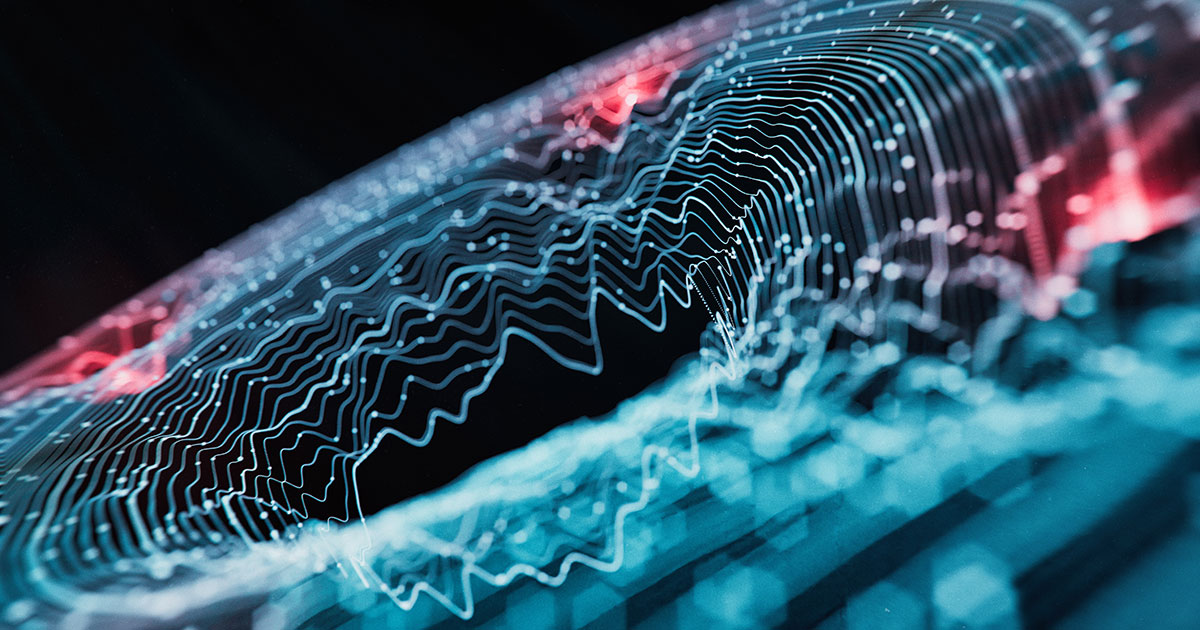
My most recent Wisconsin Lawyer article (in the November issue) took an in-depth look at the evolution of generative artificial intelligence (GenAI) within the legal industry over the past year.1 The interest in and use of GenAI in legal practice increased throughout 2024. A major change is how foundational models are being implemented into legal-specific tools.2 Before 2024, legal technology companies were advertising the potential uses of GenAI within their legal technology products. Throughout 2024, these legal-specific tools became more available.
Several trends are likely to continue in 2025.
I generally ascribe to the advice to “never make predictions, especially about the future.”3 So, I will not call these predictions; rather, they are trends that evolved in 2024 and are likely to continue to do so in 2025. These are some of the GenAI trends that I believe will continue to affect the legal industry. Watching and understanding these trends will be important for lawyers who want to leverage technology to enhance productivity, improve client outcomes, remain competitive in an evolving landscape, and comply with ethical rules and guidance.
Generative AI Trends Expected in 2025
Ethical Guidance and Court Orders Arising from Challenges and Limitations. Since the introduction of GenAI, its use in the legal industry has raised numerous ethical concerns. Despite some of these stories of lawyer misuse making their way into the mainstream news cycle, instances of misuse have continued. Even after numerous ethical opinions and guidance were issued by state bar associations4 and the American Bar Association5 and numerous courts across the country issued court orders and local rules6 pertaining to the use of GenAI with court filings, these instances of attorney misuse have continued. This was not a trend that I anticipated seeing at this stage, especially after all the publicized cases of lawyers’ GenAI use gone wrong and focus on ethical use by bar associations and courts, but unfortunately it is a trend that is likely to continue.
 Brent J. Hoeft, Cleveland State Univ. College of Law 2006, is the State Bar of Wisconsin’s practice management advisor and manager of the Practice411™ practice management program. If you have questions about technology, practice management, or the business aspects of your practice, call (800) 957-4670 or email practicehelp@wisbar.org.
Brent J. Hoeft, Cleveland State Univ. College of Law 2006, is the State Bar of Wisconsin’s practice management advisor and manager of the Practice411™ practice management program. If you have questions about technology, practice management, or the business aspects of your practice, call (800) 957-4670 or email practicehelp@wisbar.org.
Enhanced AI-Powered Legal Research. In 2024, legal research tools began to implement GenAI into their extensive legal-document-database search products to assist with search, review, and summary of legal research.7 There is a consistent trend toward greater integration of GenAI with these legal research tools, allowing lawyers to conduct complex searches, interact with research results and documents, and receive real-time case-law updates. Some legal research companies have started to expand their products to include capabilities beyond legal research, incorporating features for drafting, analyzing, summarizing, and translating documents; creating contract comparisons, provision recommendations, and redline analysis; and executing workflows. Deeper integration and use of GenAI within legal research products will continue in 2025.
Advanced Document Generation and Analysis. I expect GenAI to play a more substantial role in document generation and analysis in 2025. Tools that can analyze complex clauses, flag high-risk terms, and suggest alternative wording will become more widely available. The practice of law is document intensive. GenAI can be used to increase efficiency, accuracy, and clarity in generating complex documents and assist in reviewing and summarizing multiple complex legal documents to find inconsistencies and red flags.
Implementation of GenAI into Practice Management Software. By embedding AI within practice management systems, firms can automate administrative tasks more effectively, improve searches across clients’ entire files, summarize current case status, assist with workflow and client communication tasks, and optimize the operational and client-service sides of legal practice. This type of GenAI integration could have the greatest effect on the day-to-day operations of a law practice, by making possible greater productivity in workflows, faster understanding of case status, working within firms’ own forms and document libraries, and improved communication with clients.
The Billable Hour. Each new technological innovation adopted by the legal industry is followed by predictions about the end of the billable hour. With the adoption of GenAI into law practice, such debates are again occurring.
GenAI tools can save significant amounts of time across many different tasks involving the representation of clients. Lawyers cannot bill for time saved by using these types of tools.8 How law firms will handle the effects of the substantial increases in efficiency is the subject of much debate. Discussions about the billable hour, alternative billing models, and reasonable fees9 will continue as the legal profession wrestles with the implications of the efficiency gains from implementing GenAI as a law practice tool.
Legal Proceedings: Evidentiary and Authentication Issues. GenAI is rapidly improving not only for generating text-based outputs but also for generating audio and video outputs. Deepfakes (AI-generated audio and video) are becoming very convincing. It is difficult to detect deepfake audio, and AI-generated video is also rapidly improving and becoming hard to detect. Heightening the risk of use and abuse is that the tools used to create deepfakes are inexpensive and easy to use. In the context of authenticating evidence in a legal proceeding, deepfakes are very problematic. Judges and lawyers must determine how to address the risks posed by the potential for deepfakes being submitted as evidence in legal proceedings.
Conclusion
Undoubtedly, there will be many more developments with GenAI in the legal industry. These are just a few examples of what I believe to be the more interesting and anticipated trends. As the industry continues to explore and adopt GenAI tools, attorneys must remain vigilant, balancing the benefits of innovation with ethical considerations to ensure the tools serve the best interests of the legal profession, clients, and society overall.
To help State Bar of Wisconsin members stay informed, Wisconsin Lawyer will cover ongoing changes, implementations, and evolution of GenAI in the legal profession throughout 2025.
Endnotes
1 Brent Hoeft, Current State of Generative AI in Legal: Benefits, Risks, and Best Practices, 97 Wis. Law. 33 (Nov. 2024), https://www.wisbar.org/NewsPublications/WisconsinLawyer/Pages/Article.aspx?Volume=97&Issue=10&ArticleID=30717.
2 Foundational models are the machine learning models that are trained on vast datasets to learn how to generate outputs. Examples include OpenAI’s ChatGPT, Google’s Gemini, and Anthropic’s Claude.
3 I had always heard this quote attributed to Yogi Berra. However, variations of this quote have been attributed to many individuals, including Yogi Berra, Mark Twain, Nostradamus, and Sam Goldwyn.
4 N.J. Supreme Ct., Notice to the Bar – Legal Practice: Preliminary Guidelines on the Use of Artificial Intelligence by New Jersey Lawyers, https://www.njcourts.gov/sites/default/files/notices/2024/01/n240125a.pdf (last visited Dec. 8, 2024); Pa. Bar Ass’n Comm. on Legal Ethics & Pro. Resp. & Philadelphia Bar Ass’n Pro. Guidance Comm. Joint Formal Op. 2024-200, Ethical Issues Regarding the Use of Artificial Intelligence, https://www.pabar.org/Members/catalogs/Ethics Opinions/Formal/Joint Formal Opinion 2024-200.pdf (last visited Dec. 8, 2024); State Bar of Mich., Ethics JI -155 (Oct. 27, 2023), https://www.michbar.org/opinions/ethics/numbered_opinions/JI-155; Fla. Bar Ethics Op. 24-1 (Jan. 19, 2024), https://www.lawnext.com/wp-content/uploads/2024/01/FL-Bar-Ethics-Op-24-1.pdf; State Bar of Cal. Standing Comm. on Pro. Resp. & Conduct, Practical Guidance for the Use of Generative Artificial Intelligence in the Practice of Law, https://www.calbar.ca.gov/Portals/0/documents/ethics/Generative-AI-Practical-Guidance.pdf (last visited Dec. 8, 2024); Minn. State Bar Ass’n, Working Grp. on AI, Implications of Large Language Models (LLMs) on the Unauthorized Practice of Law (UPL) and Access to Justice, https://mnbars.org/?pg=MSBAAnnouncements&blAction=showEntry&blogEntry=112704; State Bar of Tex., Taskforce for Responsible AI in the Law, Interim Report to the State Bar of Texas Board of Directors, https://www.texasbar.com/AM/Template.cfm?Section=Meeting_Agendas_and_Minutes&Template=/CM/ContentDisplay.cfm&ContentID=62597 (last visited Dec. 8, 2024); N.Y. State Bar Ass’n Task Force on Artificial Intelligence, Report and Recommendations to NYSBA House of Delegates, https://nysba.org/app/uploads/2022/03/2024-April-Report-and-Recommendations-of-the-Task-Force-on-Artificial-Intelligence.pdf.
5 See ABA Standing Comm. on Ethics & Pro. Resp., Formal Ethics Op. 512, Generative Artificial Intelligence Tools (July 29, 2024), https://www.americanbar.org/content/dam/aba/administrative/professional_responsibility/ethics-opinions/aba-formal-opinion-512.pdf.
6 See Ropes & Gray, Artificial Intelligence Court Order Tracker, https://www.ropesgray.com/en/sites/artificial-intelligence-court-order-tracker (last visited Dec. 8, 2024). (This is an interactive map tool to keep track of the court orders issued in various jurisdictions in the U.S.)
7 See tools like Westlaw CoCounsel (formerly of Casetext), Lexis+ AI, vLex VincentAI.
8 See Formal Ethics Op. 512, supra note 5.
9 See SCR 20:1.5 Fees, https://www.wicourts.gov/services/attorney/docs/scr20fees.pdf (last visited Dec. 8, 2024).
» Cite this article: 98 Wis. Law. 37-38 (January 2025).
